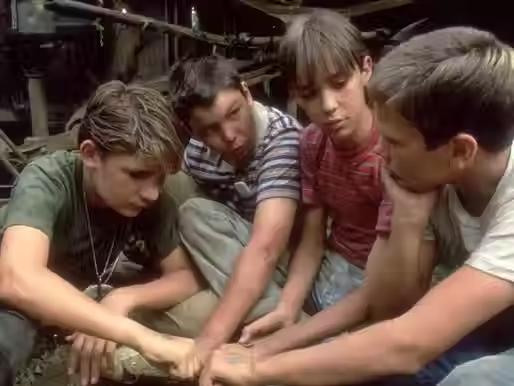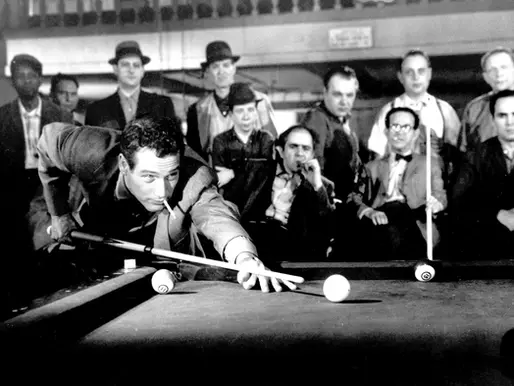top of page
Search
8 Star Film
A film we have rated as 8 out of 10 stars.


True Romance (1993)
True Romance (1993) is a film that wears its heart, blood, and bullets on its sleeve. A dazzling, hyper-violent road movie wrapped in a gritty love story, it fuses Tony Scott’s sleek, kinetic direction with Quentin Tarantino’s stylized dialogue and raw narrative instincts. Though it initially underperformed at the box office, the film has since become a cult classic—beloved for its wild characters, memorable scenes, and unapologetically romantic core.

Soames Inscker
4 min read


As Good as it Gets (1997)
As Good as It Gets (1997) is a romantic dramedy with a sharp edge and a tender heart. Written and directed by James L. Brooks—known for his deft blend of comedy and emotional authenticity (Terms of Endearment, Broadcast News)—the film explores themes of love, mental illness, loneliness, and redemption.

Soames Inscker
5 min read


Total Recall (1990)
Total Recall (1990) is a mind-bending science fiction action film that fused the bombast of late-1980s action cinema with the cerebral paranoia of Philip K. Dick’s speculative fiction. Directed with bold intensity by Dutch provocateur Paul Verhoeven—coming off the success of RoboCop (1987)—Total Recall is a unique hybrid: a philosophical puzzle wrapped in ultraviolent thrills, enhanced by groundbreaking visual effects and anchored by one of Arnold Schwarzenegger’s most iconic

Soames Inscker
5 min read


Heat (1995)
Michael Mann’s Heat (1995) stands as a towering achievement in the crime genre, a meticulously crafted epic that explores the intersection of professionalism, obsession, and loneliness through the lives of cops and criminals on opposite sides of the law. At its core, Heat is a philosophical character study disguised as a heist thriller—brilliantly acted, visually hypnotic, and thematically resonant.

Soames Inscker
5 min read


The Big Lebowski (1998)
Few films have travelled the cultural arc from cult curiosity to revered classic quite like The Big Lebowski. Released in 1998 to mixed reviews and modest box office returns, this offbeat neo-noir comedy by Joel and Ethan Coen has since become a beloved touchstone of late 20th-century American cinema.

Soames Inscker
4 min read


Dances With Wolves (1990)
Kevin Costner’s Dances with Wolves is an ambitious, sweeping, and deeply heartfelt Western that redefined the genre for a new generation. Released in 1990, the film marked Costner’s directorial debut and was met with critical acclaim, massive box office success, and a shower of Academy Awards — including Best Picture and Best Director.

Soames Inscker
4 min read


12 Monkeys (1995)
Terry Gilliam’s Twelve Monkeys is a dark, cerebral, and haunting science fiction film that stands as one of the most provocative entries in the genre from the 1990s. Released in 1995, it melds time travel, dystopian paranoia, and psychological instability into a fractured narrative that challenges the viewer’s perception of reality.

Soames Inscker
4 min read


The Insider (1999)
Michael Mann’s The Insider is a gripping, intense drama based on the true story of a whistleblower’s fight against the tobacco industry. Released in 1999, the film stands out as a meticulously crafted, morally complex exploration of truth, corporate power, and personal sacrifice. Anchored by powerhouse performances and a taut screenplay, The Insider is a compelling example of investigative cinema at its finest.

Soames Inscker
2 min read


The Sixth Sense (1999)
M. Night Shyamalan’s The Sixth Sense is a landmark psychological thriller that captivated audiences upon its release in 1999 and has since become a cultural touchstone. Known for its haunting atmosphere, emotional depth, and one of the most famous plot twists in cinematic history, the film masterfully blends supernatural elements with a poignant exploration of trauma, grief, and connection.

Soames Inscker
3 min read


Reservoir Dogs (1992)
Quentin Tarantino’s Reservoir Dogs burst onto the independent film scene in 1992 as a raw, audacious, and genre-defining crime thriller. Marking the debut of one of cinema’s most distinctive voices, the film shocked audiences with its stylized violence, razor-sharp dialogue, and non-linear storytelling. With a modest budget and an ensemble cast of rising stars, Reservoir Dogs became a cult classic and a blueprint for a new wave of indie filmmaking.

Soames Inscker
2 min read


The Truman Show (1998)
When The Truman Show premiered in 1998, it felt both wildly imaginative and eerily prescient. A surreal, satirical fable about media manipulation, personal freedom, and constructed reality, Peter Weir’s film is one of the sharpest and most original works of the 1990s. Anchored by a revelatory performance from Jim Carrey, it deftly balances existential drama, biting social commentary, and unexpected emotional resonance.

Soames Inscker
4 min read


The English Patient (1999)
Anthony Minghella’s The English Patient (1996) is a sweeping, melancholic, and visually sumptuous epic that blends romance, war, memory, and identity into a hauntingly beautiful cinematic experience.

Soames Inscker
4 min read


Fight Club (1999)
David Fincher’s Fight Club (1999) is a blistering, confrontational, and philosophically incendiary piece of cinema that has grown from a cult favourite into one of the most influential and dissected films of the late 20th century.

Soames Inscker
3 min read


Unforgiven (1992)
Set in the 1880s, Unforgiven follows William Munny (Clint Eastwood), a former gunslinger turned hog farmer, long retired from his violent past. He is lured back into action when a bounty is posted on two cowboys who mutilated a prostitute in the town of Big Whiskey, Wyoming.

Soames Inscker
2 min read


Magnolia (1999)
Paul Thomas Anderson’s Magnolia is one of the most ambitious and audacious American films of the 1990s. Released in 1999, it stands as a sprawling, emotionally charged mosaic of interwoven lives and spiritual longing.

Soames Inscker
5 min read


Stand By Me (1986)
Directed by Rob Reiner and based on Stephen King’s novella The Body, Stand by Me is a poignant, bittersweet coming-of-age film that transcends its simple premise to explore the complexity of friendship, loss, and the painful beauty of growing up. Set in the fictional town of Castle Rock, Oregon in the summer of 1959, the film follows four 12-year-old boys on a journey to find the body of a missing boy—an odyssey that becomes a profound rite of passage.

Soames Inscker
3 min read


Meet Me in St Louis (1944)
Directed by Vincente Minnelli and starring Judy Garland, Meet Me in St. Louis is a radiant Technicolor musical that blends nostalgia, romance, and family warmth into one of the most enduring and beloved films of Hollywood’s Golden Age. Set in the year leading up to the 1904 World’s Fair, this MGM classic is more than just a musical—it's a heartfelt portrait of American life at the turn of the century, suffused with charm and emotional depth.

Soames Inscker
3 min read


Love Crazy (1941)
Love Crazy (1941) is a sparkling example of screwball comedy, and a delightful testament to the enduring screen chemistry between William Powell and Myrna Loy. Best known for their iconic roles as Nick and Nora Charles in The Thin Man series, Powell and Loy teamed up for Love Crazy during a time when audiences needed levity more than ever—amidst the mounting tensions of World War II.

Soames Inscker
4 min read


The Man Who Shot Liberty Valance (1962)
The Man Who Shot Liberty Valance (1962) is not just one of John Ford’s greatest films—it is one of the most introspective and politically astute Westerns ever made. A masterful late-career work from the director who helped define the genre, the film reconsiders the mythology of the American frontier and asks hard questions about the cost of civilization, the nature of heroism, and the truth behind legend.

Soames Inscker
5 min read


The Hustler (1961)
The Hustler (1961) is more than just a film about pool—it’s a powerful, haunting character study about pride, obsession, and the elusive nature of integrity.

Soames Inscker
4 min read
bottom of page


